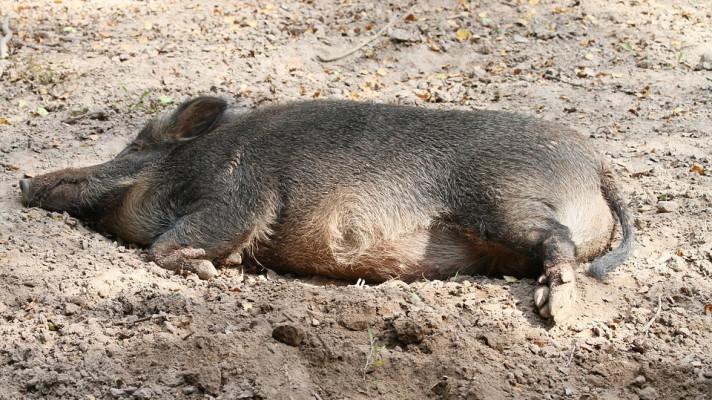Evidence points to wild boar in transmission of African swine fever
Wild boar are playing the main role in spreading African swine fever across Europe. Learning how to limit or stop this vector of infection is the central topic of an FAO workshop opening last week in Kaunas, Lithuania.
African swine fever is a viral disease of pigs and wild boar that presents as a haemorrhagic fever and results in up to 100 percent mortality of infected animals. It carries no human health risks, but can have immense socio-economic, trade, and food security consequences.
The disease has been spreading throughout the Caucasus and Eastern Europe since its entry into Georgia from Africa in 2007. In the ensuing years, it has crossed borders and entered Armenia, the Russian Federation, Ukraine, Belarus, Lithuania, Poland, Latvia, Estonia, Moldova and recently the Czech Republic and Romania. Any country with a swine production sector or wild boar is at risk.
While all members of the pig family are vulnerable to infection, the clinical disease is seen only in domestic and feral pigs, as well as in the closely related European wild boar. Currently there is no vaccine against the African swine fever virus.
"It is not yet completely clear how the wild boars transmit the disease," said FAO animal health officer Daniel Beltran-Alcrudo, "but it seems to depend largely on their population density and interaction with low-biosecurity pig production."
As veterinary services are often not well prepared or experienced in dealing with wildlife, Beltran-Alcrudo said, it is essential to create understanding and coordination with wildlife and forestry authorities - as well as with hunters - to successfully confront the disease.
Entitled, "African swine fever management in wild boar - surveillance and prevention of transmission to/from domestic pigs," the two-day workshop will allow participants to learn about and discuss different animal health management approaches in wild boar. They will also gain field experience on hunting, biosecurity, sampling, and carcass disposal.
The event will contribute to development of a strategy to prevent the virus from entering countries that are still free of the disease, and better contain the disease in wild boar in already affected countries.
The training complements a recently published manual on African swine fever detection and diagnosis, now available in English and in Russian, which will be distributed to all participants.
If African swine fever becomes established in wild boar or feral pig populations, effective control becomes challenging. The strategy is to minimize contact between wild boar and domestic pigs through fencing of piggeries, limiting the numbers of free-ranging or feral pigs, and ensuring proper disposal of kitchen and slaughtering waste.
Hunting pressure may force long-distance movements of
wild boar, effectively increasing their range.
How best to control African swine fever in wild boar is a source of controversy. Removal of carcasses during epidemics followed by decontamination of the site - while very resource-consuming - has been used widely and successfully in the European Union.
Hunting pressure may force long-distance movements of the animals, effectively increasing their range. Fencing of open areas, the use of repellents, or supplementary feeding can also be problematic and are still the subject of debate. Hunters and hunting clubs, as well as forestry services are considered to be key partners in surveillance and control of the disease in wild boar.
This week's workshop was organized under the Global Framework for the Progressive Control of Transboundary Animal Diseases (GF - TADs) by FAO, with the participation of front-line professionals from the veterinary services and forestry agencies of Belarus, Bulgaria, Estonia, Germany, Hungary, Latvia, Lithuania, Moldova, Romania, and Ukraine, as well as representatives of the World Organization for Animal Health (OIE), the European Commission and the Federation of Associations for Hunting and Conservation.
"Training and collaboration among agencies are essential if we are to control this deadly pig disease," said Beltran-Alcrudo. "If not properly addressed, it has the potential to devastate human livelihoods and compromise food security and trade in Europe. "
